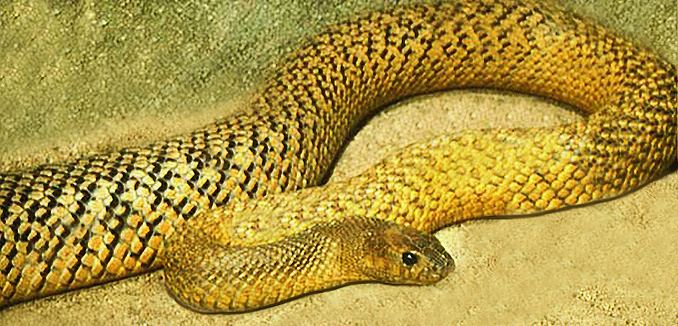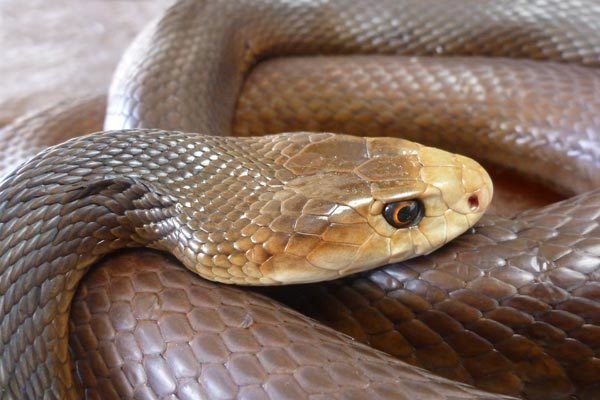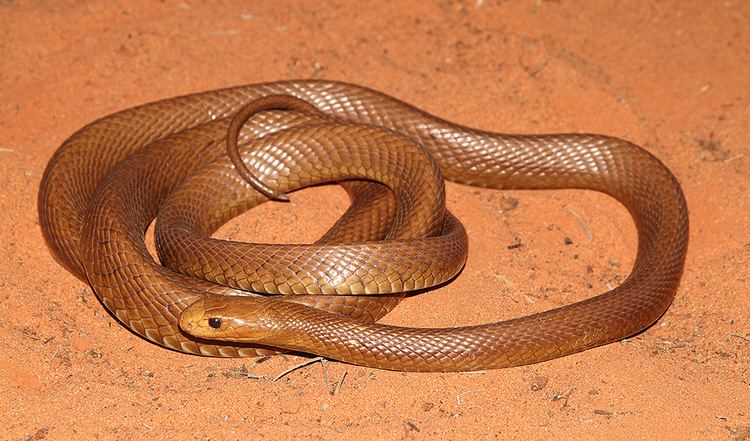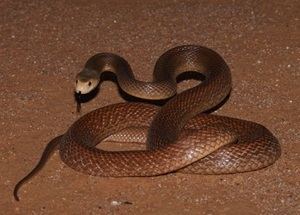Suborder Serpentes Scientific name Oxyuranus Rank Genus Order Scaled reptiles | Subphylum Vertebrata Higher classification Elapidae Phylum Chordata | |
 | ||
Lower classifications Inland taipan, Coastal taipan, Oxyuranus temporalis | ||
Snake attack taipan attacks go pro cam
The taipans are snakes of the genus Oxyuranus in the elapid family. They are large, fast-moving, highly venomous, and endemic to Australasia. There are currently three recognized species, one of which, the coastal taipan, has two subspecies. The taipans are considered some of the most deadly known snakes.
Contents
- Snake attack taipan attacks go pro cam
- Inland taipan oxyuranus microlepidotus having a drink
- Etymology
- Species and geographic ranges
- Diet
- Venom
- References

Inland taipan oxyuranus microlepidotus having a drink
Etymology

The common name, taipan, was coined by anthropologist Donald Thomson after the word used by the Wik-Mungkan Aboriginal people of central Cape York Peninsula, Queensland, Australia.
Species and geographic ranges

The three known species are: the coastal taipan (Oxyuranus scutellatus), the inland taipan (Oxyuranus microlepidotus), and a recently discovered third species, the Central Ranges taipan (Oxyuranus temporalis). The coastal taipan has two subspecies: the coastal taipan (O. s. scutellatus), found along the northeastern coast of Queensland, and the Papuan taipan (O. s. canni), found on the southern coast of Papua New Guinea.
Diet
Their diets consist primarily of small mammals, especially rats and bandicoots.
Venom

Species of this genus possess highly neurotoxic venom with some other toxic constituents that have multiple effects on victims. The venom is known to paralyse the victim's nervous system and clot the blood, which then blocks blood vessels and uses up clotting factors. Members of this genus are considered to be among the most venomous land snakes based on their murine LD50, an indicator of the toxicity on mice. The inland taipan is considered to be the most venomous land snake and the coastal taipan, which is arguably the largest Australian venomous snake, is the third-most venomous land snake. The central ranges taipan has been less researched than other species of this genus, so the exact toxicity of its venom is still not clear, but it may be even more venomous than the other taipan species. Apart from venom toxicity, quantities of venom delivered should also be taken into account for the danger posed. The coastal taipan is capable of injecting a large quantity of venom due to its large size.

In 1950, Kevin Budden, an amateur herpetologist, was one of the first people to capture a taipan alive, although he was bitten in the process and died the next day. The snake, which ended up dying a few weeks later, was milked by Melbourne zoologist David Fleay and its venom used to develop an antivenom, which became available in 1955.
Temperament also varies from species to species. The inland taipan is generally shy while the coastal taipan can be quite aggressive when cornered and will actively defend itself.
